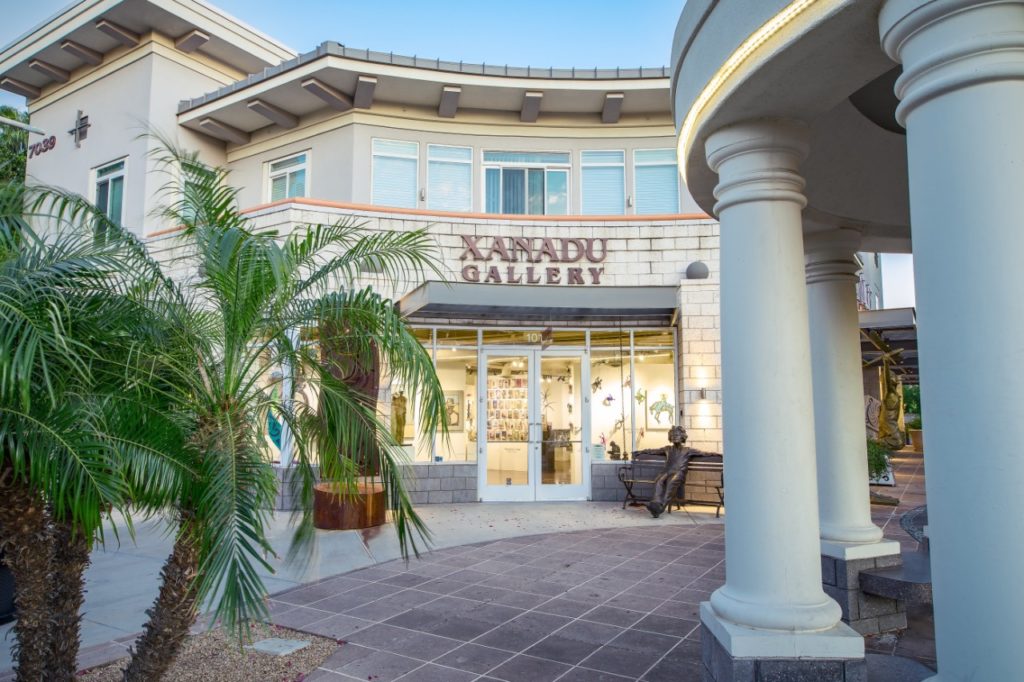

As a gallery owner, I often have the opportunity to speak with artists who are interested in showing their art in my gallery. Some of these artists are well-established in their art careers and may already be showing in other galleries. Many, however, are new to approaching galleries and feel nervous about presenting their art to gallery owners.
This reticence is understandable – it can feel intimidating to present one’s creative endeavors to a gallery owner and face the prospect of rejection. Many artists worry that their work isn’t ready to undergo the scrutiny it is sure to face when presented to galleries.
Perhaps you have wondered if your art is ready to present to galleries.
Having worked with and interacted with hundreds, perhaps thousands, of artists who are seeking gallery representation over the years, I would like to suggest that, while there is much that needs to occur to prepare to approach galleries, an artist can feel confident in approaching galleries if they can answer in the affirmative the following three questions.
Have you Created a Grouping of Consistent, High Quality Art?
There are a number of factors that will play into the success of a gallery approach – your professionalism and personality, the format of your portfolio (more on this in a moment) and your timing, to name a few – but the most important factor is the artwork you are presenting. Your artwork is going to need to resonate with the gallery owner. Art is very personal, and a gallery owner’s initial response to your work is likely to be based on personal taste. If the gallery owner likes your work, a door will be opened to further discussion.
After an initial impression, a gallery owner is going to consider whether the art is likely to elicit a positive response from the gallery’s clientele. They also have to think about how the artwork will fit into their space, and envision how the art will look alongside the artwork already showing in the gallery.
If you are presenting art that is widely varied in style and uneven in terms of the quality of its presentation, you will find gallery owners confused and nervous about showing your art.
A grouping of art that is consistent in terms of style, subject matter, palette and presentation will help reassure a gallery owner that as the gallery begins marketing and selling your work, they will be able to get more of it, and will be able to establish a following for your art.
As you visit galleries, notice how artists in these galleries are creating work that is consistent and recognizable as having been created by an artist who has a clear idea about what she/he is striving to accomplish. This is what you can be working toward in your art.
To be clear, this doesn’t mean that you have to create homogenous, repetitive artwork, it simply means that a body of art that is recognizable as yours is more likely to be met with a positive response from gallery owners.
While it can take time and a lot of practice to develop such a body of work, once you’ve created 15-25 consistent artworks, you will be well on your way to being ready to present your art to galleries.
Have you Created a Professional Digital Portfolio of Your Art?
Once you have a body of consistent, high quality art, you need to develop a portfolio that will allow you to present the art to gallery owners in a professional manner.
I started my career in galleries in the early 1990’s and so have been around long enough to see the format of the portfolio evolve in a number of ways. When I began, artists were presenting physical portfolios with photo prints or even slides. Now, almost all of the portfolios I see are digital.
You can create an effective, professional portfolio using a presentation program like PowerPoint, Keynote or Google Slides. Include your 15-25 consistent works and information on each page about the artwork.
I’m including a couple of sample portfolios to give you an idea of how you might approach putting together your own to present to galleries. You’ll see that the format is very simple, and that you have latitude in terms of design and colors to craft a portfolio that will best show your work.
The beauty of a digital portfolio is that it will allow you to present your work when you are visiting a gallery in person, or digitally if you are approach via email.
Sample Portfolios
Have you Developed an Extensive List of Appropriate Galleries to Approach?
Finally, it’s critical as you seek gallery representation to have a deep and broad list of galleries you can approach with your portfolio. To a certain extent, your success is going to depend not only upon the professionalism of your work and your portfolio, but also upon a bit of luck.
Galleries you approach are going to have a number of responses to your art. Some simply aren’t going to find the work interesting. Don’t take this personally – it’s a reflection of the gallery owner’s individual taste. Many gallery owners will be interested but feel that the timing isn’t right for them to take on a new artist. It’s going to take some serendipity to present your artwork to a gallery owner who is both interested in your artwork and ready to take on a new artist.
Your task is to present your portfolio to enough galleries to get the odds to begin working in your favor. In other words, you will create your own luck by approaching a good number of galleries.
I encourage artists to build a list of at least 100 galleries before they begin approaching galleries for representation. That may sound like a lot, but you can target a variety of areas both close to and distant from your studio. With a little internet research, you can build up a nice list of galleries.
Building a long list of galleries will not only help you increase your odds of finding galleries ready to represent you, but will have the added benefit of putting you in the right mindset to succeed. Finding representation is going to take some work – you are going to have some galleries decline to show your artk. These aren’t dead ends, they are just obstacles to overcome in your quest to find gallery representation.
Are you Interested In Showing Your Art in Galleries?
If you are interested in showing your artwork in galleries and found the advice above helpful, I invite you to sign up for my blog and newsletter. Registration is free and you will receive insightful, actionable advice to help you in every aspect of your art career.
Join our Mailing List!

